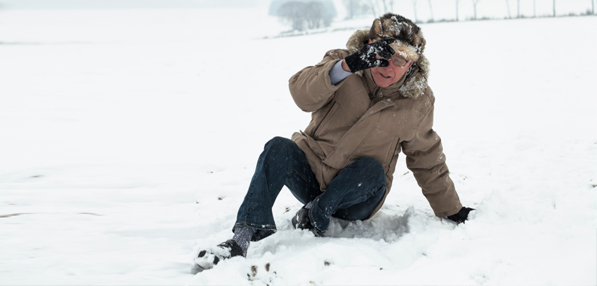B.C. Fall Prevention Awareness Week – November 3 – 9
Everyone experiences a fall now and then. While most falls do not cause serious injury, occasionally we are reminded of how even a simple fall from standing can be catastrophic. Indeed, falls from standing height are the most common cause of injury-related hospitalizations across the lifespan and the number one cause of injury-related deaths in older adults. Falls are especially devastating among older adults. It is the number one cause of injury-related deaths in this population and are the cause of over 90% of hip fractures and wrist fractures, and 60% of head injuries.
There is no single reason why people fall. A fall usually occurs when several risk factors happen at the same time. For example, if you walk down the hallway in your home at a normal pace during the day, there is little chance you will fall. But if it is the middle of the night and there are no lights on, and you are rushing to get to the bathroom, your chances of falling are much greater.
Some people believe that falls are a normal part of aging, that no matter what they do falls can’t be prevented, or that it won’t happen to them. The truth is: Falls are not a normal part of aging and there are many things you can do to prevent falls.
Start a regular exercise program
Exercise is one of the most important ways to lower your chances of falling. It makes you stronger and helps you feel better. Exercises that improve balance and coordination (like Tai Chi) are the most helpful. Lack of exercise leads to weakness and increases your chances of falling.
Have your vision checked at least once a year
Poor vision can increase your chances of falling. Have your eyes checked by an eye doctor at least once a year. You may be wearing the wrong glasses or have a condition like glaucoma or cataracts that limits your vision. Also, clean your glasses often and be aware that the risk of falling outside and on stairs is increased when wearing bifocals or progressive lenses.
Ask your health care provider to review your medicines
Some medications can increase your chances of falling if you experience negative side-effects, interactions between drugs, or errors in following prescription directions. Sedatives, anti-depressants, and anti-psychotic drugs can reduce mental alertness, impair balance and gait, cause dizziness or drowsiness, and cause drops in blood pressure while standing.
Have your doctor or pharmacist review all the medicines you take (even over-the-counter medicines) and tell them if the medications your taking are making you drowsy or dizzy.
Also, if you are taking blood thinners (e.g. Coumadin) and have a bump or blow to the head, you should be seen immediately by a health care provider due to increased risk of intracranial hemorrhage (bleeding in the brain).
Make your home or surroundings safer
The majority of falls happen in our own homes while performing normal daily activities. Falls are often due to home hazards that are easy to overlook but easy to fix. To make your home safer:
- Remove small throw rugs or use double-sided tape to keep the rugs from slipping.
- Keep items you use often in cabinets you can reach easily without using a step stool.
- Have grab bars put in next to your toilet and in the tub or shower.
- Use non-slip mats in the bathtub and on shower floors.
- Place a lamp close to the bed where it’s easy to reach.
- Put in a night-light so you can see where you’re walking.
- Hang light-weight curtains or shades to reduce glare.
- Have handrails and lights put in on all staircases.
- Wear shoes both inside and outside the house. Avoid going barefoot or wearing slippers.

